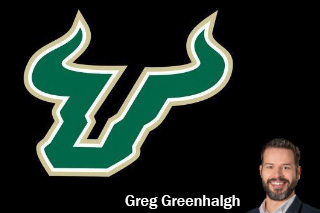News Archive
Biz/Sports Professor: Court Ruling and NCAA Changes Will Lead to Big Changes in College Athletics
By Keith Morelli

TAMPA (July 14, 2021) -- A gathering storm for college athletes hit last month. A U.S. Supreme Court decision first opened the way for universities to pay athletes and provide other benefits related to education. The timing coincided with several states – including Florida – implementing their own policies that allow student athletes to financially profit from their names, images and likenesses through sponsorship fees and endorsements on their social media platforms.
Those two developments could have a seismic impact on the world of college sports, said Greg Greenhalgh, visiting instructor with the USF Muma College of Business Vinik Sport & Entertainment Management Program.
“The recent decision by the U.S. Supreme Court will have lasting implications on the future of the NCAA,” said Greenhalgh, an expert on the business side of sports. “The decision allows for schools to provide student athletes with unlimited education-related compensation.”
For more than 100 years, the NCAA has fought to preserve the amateur status of student athletes, arguing they should receive no compensation at all. Critics say the arrangement discriminates against the athletes who draw millions of dollars into the university systems around the nation without any payment. Both the court ruling and the recent NCAA change on its longstanding policies on profiting from name, image and likeness matters signal what may be a sea change coming soon, Greenhalgh said.
“Sure, we could get into all the hypothetical ways schools could use this to recruit the best student athletes,” he said, “however, in the big picture, this is going to really change the composition of the NCAA.
“Until now, the larger, Power 5 schools, which include the members of the five most financially lucrative conferences (ACC, SEC, Big 10, Big 12, PAC-12), were able to recruit some of the best athletes based on the facilities they offer, access to the highest-level coaching and exposure on national television.
“The U.S. Supreme Court decision has the potential to widen this gap,” he said, “as the wealthier and not-so-big schools are going to be able to provide student athletes with more expensive educationally related goods and services, such as computers, paid internships and study abroad programs.”
Greenhalgh said the NCAA-recently adopted Name, Image, and Likeness (NIL) allowance, which took effect on July 1 and allows student athletes to generate revenue mainly from their social media platforms and merchandizing, would likely further exasperate the division between the haves and have-nots in college athletics.
The change, approved by the NCAA's board of directors, allows college athletes to receive compensation from their social media accounts, broker endorsement deals, autograph signings and other financial opportunities.
Previously, the NCAA strictly enforced a long-standing policy of prohibiting student athletes from accepting any outside money, preserving the amateur status of the athletes. The organization, which sets the sports-related rules and policies for all universities and colleges across the nation, maintained the concept that college athletes are not professionals and therefore do not need to be compensated, other than scholarships and some stipends.
A sampling of some examples of how student athletes are now able to generate money is through sponsored social media posts or advertisements, sponsored videos on Twitter and YouTube, training lessons and summer camps, autograph and merchandise sales.
Florida is one of the states that approved the NIL policy and USF Athletics recently introduced the BOOST program, which instructs student athletes about the best ways to benefit from the changes. The program provides access to the tools needed to make sound decisions about their financial opportunities.
This moment will reshape the NCAA and college sports, Greenhalgh said.
“I believe that the genie is out of the bottle and there is no putting it back,” he said. “What the ‘new NCAA’ will look like is still in question. But one thing is certain: Things will not stay status quo.”